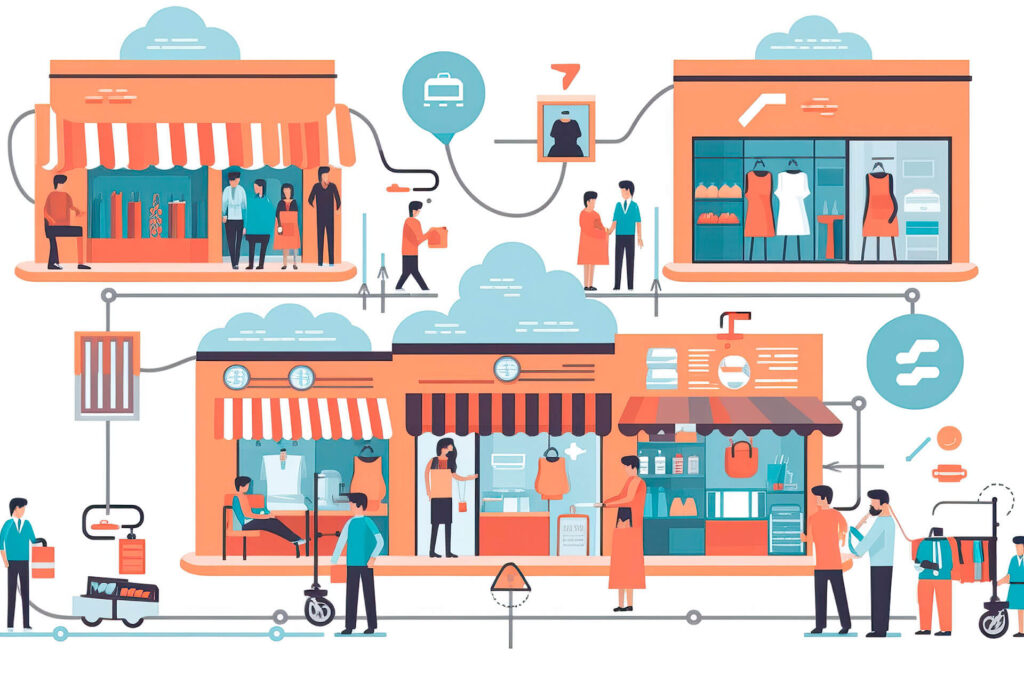The new online sales and consumer contact formats in expansion, such as direct to consumer (D2C), with which manufacturers sell their products directly to consumers, and retail media, with which distributors offer manufacturers spaces to promote their products on their digital channels, have consolidated themselves as essential tools for reaching consumers.
This is one of the main conclusions of the 13th AECOC BTC Congress, and undoubtedly a trend that is very present in the retail sector.
In the digital era, companies are adopting increasingly innovative strategies to reach consumers more directly and effectively. So, today we want to talk about these two trends that have gained relevance in recent years.
Strategies that are revolutionising the way brands engage with consumers, providing new opportunities and challenges in the competitive world of commerce.
The rise of the direct to consumer
Direct to consumer (D2C) is the strategy whereby brands sell their products directly to consumers, without traditional intermediaries such as retailers or distributors.
This trend has gained momentum thanks to the rise of e-commerce and the ability of companies to establish an online presence in a more accessible and cost-effective way.
One of the main advantages of the D2C model is that brands have greater control over their image and the customer experience. They can establish a closer relationship with consumers, collect first-hand data and use it to personalise offers and improve customer satisfaction.
At this event, it was emphasised that the direct to consumer (D2C) system must complement other channels to reach the consumer and obtain information.
In addition, companies in the sector see retail media as a format to drive sales in the online channel without relying too much on algorithms and to create joint growth strategies between manufacturers and retailers.
What the consumer, who is in charge, has been demanding is different points of contact with brands and product information. Therefore, the D2C creates another point of contact, and does not eliminate the distributor. In other words, it is complementary, another channel for sales. This is one of the current by-products: the customer can discover the brand in the shop and end up buying it online.
In this sense, the event also emphasised that the manufacturer wants to reach the consumer because he wants to get information to improve his shopping experience, to fine-tune his pricing strategy, to see which messages work, and that D2C is already a reality, although manufacturers do not intend to focus solely on D2C.

Retail media and online collaboration
Another format on the rise is retail media. It is arguably the best way to drive sales in the digital channel, as this process or system relies on constantly changing algorithms.
Retail media refers to the advertising and promotion of products and services within physical or online retail spaces.
Retailers have found that they can monetise their advertising platforms by allowing brands to promote themselves directly to consumers who visit their shops or websites.
This approach offers benefits for both retailers and brands.
Retailers can diversify their revenue streams and leverage customer data to deliver more relevant advertising. Brands can reach a wider target audience and increase their visibility by leveraging the audience and credibility of established retailers.
In short, what retail media does is to position products on the web, usually with sponsored placements, and thus drive sales.
Here, it was concluded that the distributor must bring value to the brand, and that it is not so much about generating margins for retailers, but about adding collaborative tools.
It is precisely this retail media that helps us by providing information on the levers activated in a consumer’s purchase, giving a qualitative value in terms of brand recognition.

Two key tools to reach consumers
As we can see, the combination of direct to consumer and retail media continues to gain ground as an impactful and powerful strategy for reaching consumers effectively.
In other words, brands that adopt this approach can leverage the visibility of retailers while maintaining control over their image and customer experience through their direct channels.
By collaborating with retailers to promote their products through available advertising space, brands can reach a wider audience and increase their visibility in the market. In addition, they can use the data collected through direct to consumer interactions to personalise offers and improve their effectiveness.

In conclusion, direct to consumer and retail media have established themselves as indispensable tools for reaching consumers in the digital age.
Both strategies allow brands to establish closer relationships with consumers, personalise offers and increase visibility in the market. By adopting the combined approach of D2C and retail media, retailers, manufacturers, distributors and brands can leverage the strengths of both models and achieve more effective results in their respective marketing strategies.
Follow us in Linkedin, Instagram and Twitter, sign up to our newsletter and you will keep up to date with trends and issues related to retail.

